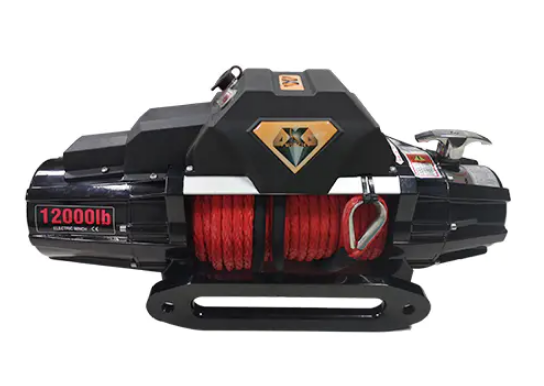Step-by-step Guide On How To Use A Portable Electric Winch Before utilizing a winch, prioritizing safety by adhering t...
Before utilizing a portable electric winch, ensure it is firmly affixed to a stable surface. Connect the winch to a powe...
Off-roading in a 4x4 vehicle can be an exhilarating adventure, but it also comes with its share of challenges and obstac...
Before utilizing a portable electric winch, ensure it is firmly affixed to a stable surface. Connect the winch to a power source, such as a truck battery, using the appropriate wiring for operation.
Next, fasten the winch cable or rope to the load you intend to move or lift. Employ either the winch's remote control or the controls directly on the device to activate the winch, guiding it in either a forward or reverse direction. Continuously oversee the winch's movement and make necessary adjustments as required.
Always prioritize adherence to the manufacturer's instructions and safety protocols when operating a portable electric winch to ensure safe and effective use.

A portable electric winch is a versatile tool serving various purposes. This motorized device is specifically designed to haul heavy loads using a cable or rope. Unlike traditional counterparts relying on a vehicle's battery, portable electric winches come equipped with their own power source, usually a rechargeable battery. This feature enhances their convenience and adaptability across diverse settings.
The benefits of employing a portable electric winch encompass:
Understanding the operational mechanism of a portable electric winch involves grasping its integral parts and components. These include the motor, gear train, control switch, and the cable or rope. The motor supplies the necessary power to drive the winch, while the gear train converts the motor's rotational force into pulling force. The control switch empowers the user to operate the winch, and the cable or rope serves as the link between the winch and the object being pulled.
In summary, a portable electric winch proves indispensable for individuals dealing with heavy object or vehicle relocation. Its blend of portability, user-friendly design, and adaptability renders it essential for various applications.
When choosing a portable electric winch, several crucial factors warrant consideration:
1. Weight Capacity and Line Speed: Opt for a winch capable of handling the load's weight while ensuring the line speed aligns with your requirements.
2. Key Features in a Top-Quality Portable Winch: Emphasize durability, ease of operation, and versatility. Seek a winch crafted from high-quality materials with a user-friendly design. Look for adaptability across diverse load types and situations.
By conscientiously evaluating these aspects, you can select a portable electric winch that precisely fits your needs and delivers consistent performance. Always adhere to the manufacturer's instructions for proper usage and maintenance of the winch.
When operating a portable electric winch, having suitable safety gear is paramount. This includes wearing gloves, safety glasses, and sturdy footwear. Additionally, employing a winch line dampener and a tree strap can significantly reduce the risk of accidents and injuries.
Several precautions are crucial for safe usage of a portable electric winch. Regularly inspect the winch and its components before and after each use. Confirm the winch is securely mounted and firmly attached to a stable anchor point. Maintain a safe distance from the winching area and avoid standing in the line of pull to minimize risks.
Varied winching scenarios demand specific safety guidelines. During off-road recovery, meticulously assess the situation and plan the recovery process. Utilizing recovery points and snatch blocks helps distribute the load and alleviate strain on the winch. Similarly, when hauling a load, ensure proper balance and secure attachment to the winch for safe operation.

As a famous wholesale high power electric winches Manufacturers, We have a strong desire that we can double-win with our customer.
Add:Changtan Industrial Zone, Zhang shui Town, Haishu District, Ningbo, China
Tel:+86-18367483862
WeChat:+86-18367483862
WhatsApp:+86-151 6815 7361
E-mail:sales@hcwinches.com
E-mail:sales2@hcwinches.com
TOP
